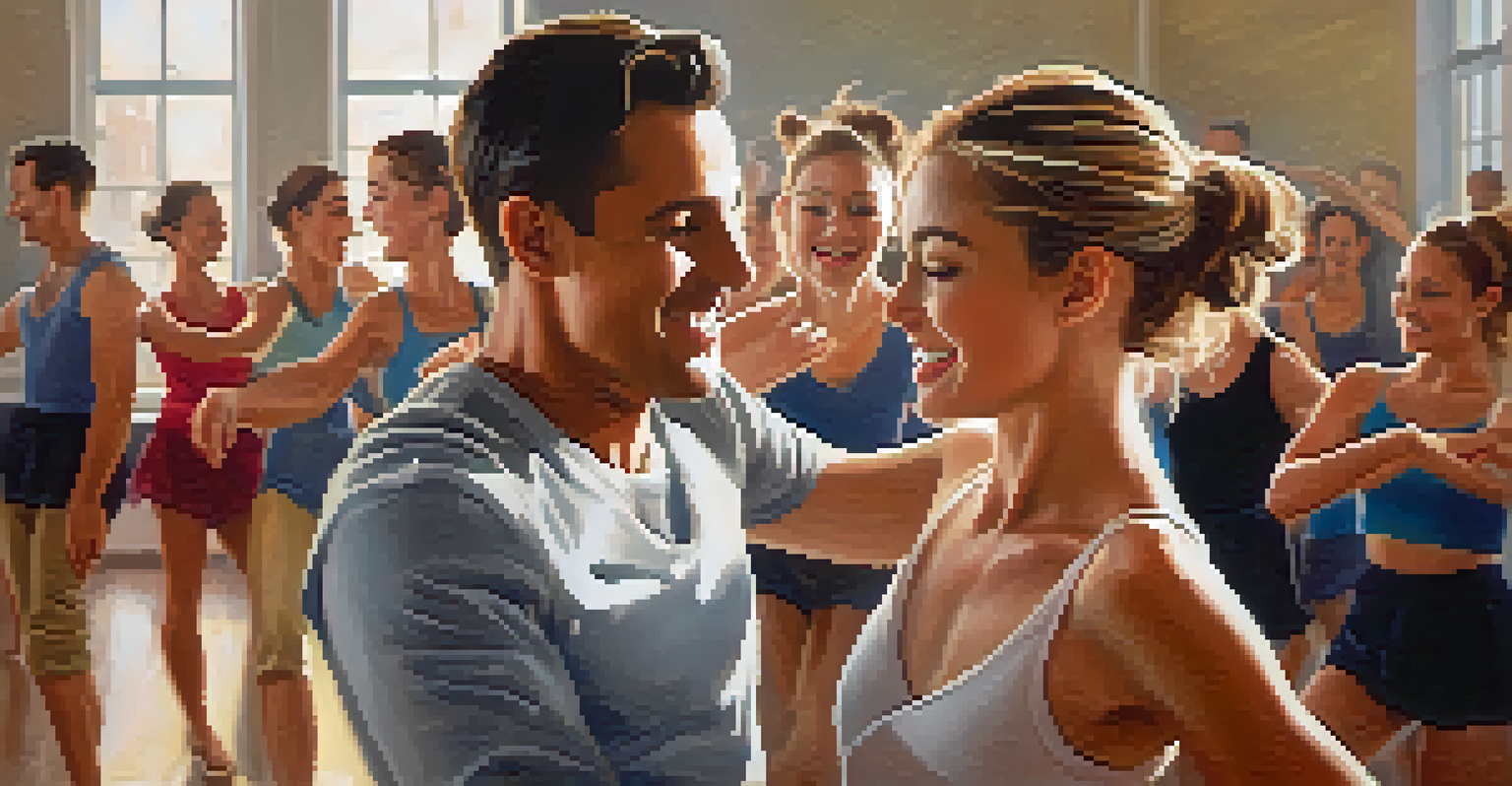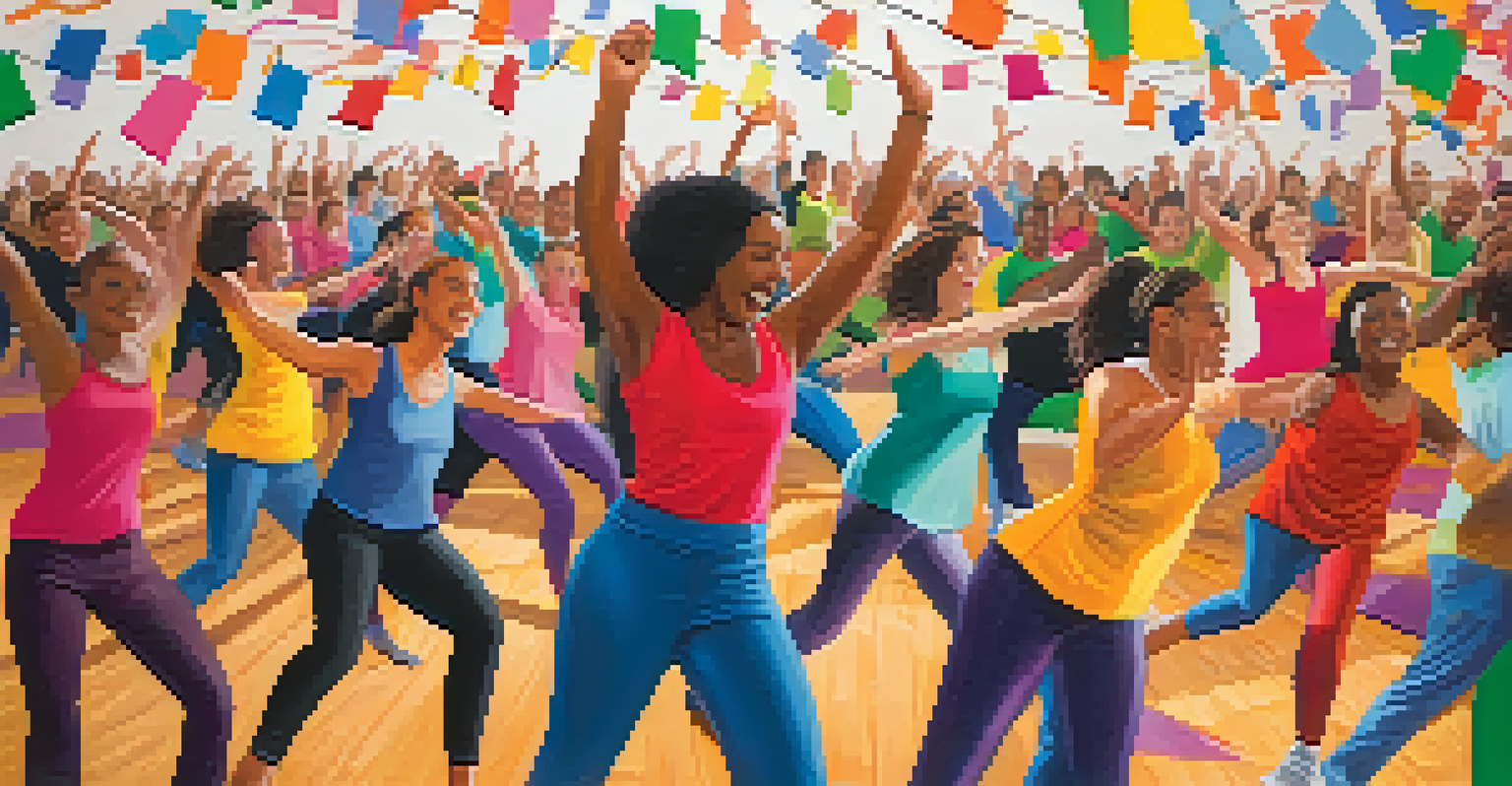The Role of Dance in Team Cohesion and Communication

Understanding Dance as a Team-Building Activity
Dance is more than just an art form; it's a powerful team-building tool. When people come together to learn and perform dance, they naturally foster a sense of unity and belonging. The shared experience of movement can break down barriers, making it easier for team members to connect on a personal level.
Dance is the hidden language of the soul.
Unlike traditional team-building exercises, dance encourages creativity and expression, allowing individuals to showcase their unique personalities. This personal touch can lead to a deeper understanding and appreciation among team members. Plus, the fun and joy of dancing can lighten the mood and make even the shyest participants engage.
Furthermore, dance requires coordination, timing, and trust, which are essential components of effective teamwork. By working together to master choreography, team members learn to rely on each other, strengthening their collaborative skills while enjoying the process.
Enhancing Communication Through Movement
Communication is vital in any team setting, and dance offers a unique way to enhance it. When dancing, individuals must rely on non-verbal cues, such as body language and facial expressions, to synchronize their movements. This reliance on physical communication can improve overall understanding among team members.

For instance, in a partnered dance, one partner leads while the other follows, creating an essential dialogue through movement. This dynamic helps individuals become more attuned to each other's signals, promoting a deeper level of empathy and connection. Over time, this awareness can translate into better verbal communication in professional settings.
Dance Builds Team Unity
Engaging in dance fosters a sense of belonging and connection among team members, enhancing collaboration.
Moreover, improvisational dance encourages spontaneity and adaptability, skills that are crucial in any team environment. When team members learn to communicate through movement, they become more open to each other's ideas and perspectives, fostering a culture of collaboration.
Building Trust and Reliability Through Dance
Trust is the foundation of any successful team, and dance can significantly contribute to building it. When team members engage in dance, they often have to rely on one another to execute movements safely and effectively. This mutual reliance fosters a sense of trust, as individuals learn to depend on each other's abilities.
Creativity is intelligence having fun.
For example, in group dance routines, each member must perform their part while being aware of others' movements. This coordination not only builds trust but also helps establish a sense of accountability. Team members learn that their actions affect the group's performance, reinforcing the importance of reliability.
Additionally, dance encourages vulnerability, as participants step out of their comfort zones to express themselves. This shared vulnerability can create strong bonds, fostering a supportive environment where individuals feel safe to take risks and collaborate more effectively.
Fostering Creativity and Innovation in Teams
Dance inherently promotes creativity, and this creative spirit can spill over into team dynamics. As individuals explore movement and expression, they are encouraged to think outside the box and embrace new ideas. This shift in mindset can lead to innovative solutions and approaches within the team.
When team members participate in dance, they often share their unique interpretations and styles. This diversity of expression can inspire others and spark conversations about creativity and collaboration. In essence, dance becomes a medium for brainstorming and exploring new concepts in a relaxed environment.
Enhances Communication Skills
Dance promotes non-verbal communication and empathy, leading to improved understanding in team settings.
Moreover, the improvisational aspect of dance can teach teams to adapt to changing situations. Just as dancers must adjust their movements based on their partners, teams can learn to pivot and innovate in response to challenges, ultimately fostering a culture of creativity and resilience.
Creating a Positive Team Atmosphere Through Dance
A positive team atmosphere is crucial for productivity, and dance can play a significant role in cultivating this environment. The joy and energy of dancing can uplift spirits and create a sense of camaraderie among team members. When people feel good, they are more likely to collaborate effectively.
Incorporating dance into team events or meetings can break the monotony and encourage a more relaxed setting. This relaxed atmosphere allows team members to share ideas more openly and engage in meaningful conversations. The laughter and fun experienced during dance can also strengthen interpersonal relationships.
Additionally, celebrating achievements through dance can reinforce a positive culture. Whether it's a small victory or a significant milestone, acknowledging accomplishments with a dance can create lasting memories and increase team morale, making everyone feel valued and appreciated.
Dance as a Tool for Conflict Resolution
Conflicts are inevitable in any team, but dance can serve as an effective tool for resolution. Engaging in physical movement can help dissipate tension and promote a sense of calm. When team members dance together, they often find it easier to let go of frustrations and focus on shared goals.
Moreover, dance can facilitate open dialogue in a non-threatening manner. When team members are engaged in a physical activity, they may feel more relaxed and willing to express their feelings. This openness can lead to constructive discussions and help resolve misunderstandings.
Fosters Creativity and Innovation
Participating in dance encourages team members to think creatively and adapt to challenges, enhancing problem-solving.
Additionally, dance teaches individuals to navigate differences by encouraging compromise and collaboration. Just as dancers must find harmony in their movements, team members can learn to work through conflicts and find common ground, ultimately strengthening their relationships.
Incorporating Dance into Team Practices and Events
Integrating dance into team practices can be as simple as incorporating a few minutes of movement into meetings. Starting a session with a short dance warm-up can energize team members and set a positive tone for the discussion ahead. It’s an easy way to break the ice and encourage participation.
Another effective approach is to organize team-building workshops focused on dance. These workshops can be led by a professional instructor who guides team members through various styles and techniques. Such experiences not only enhance skills but also create lasting memories and strengthen connections.

Lastly, consider incorporating dance into team celebrations or milestones. Whether it's a holiday party or a successful project launch, a dance party can elevate the mood and reinforce a sense of community. Embracing dance as part of team culture can create an environment where everyone feels engaged and connected.